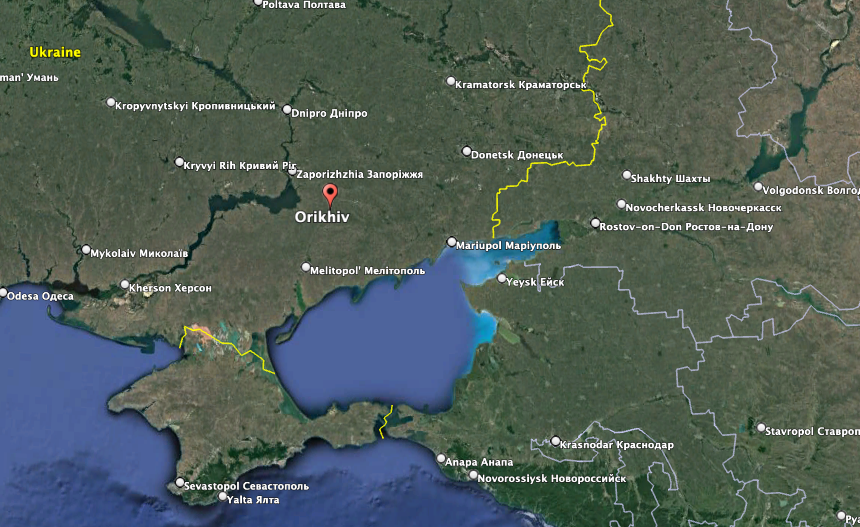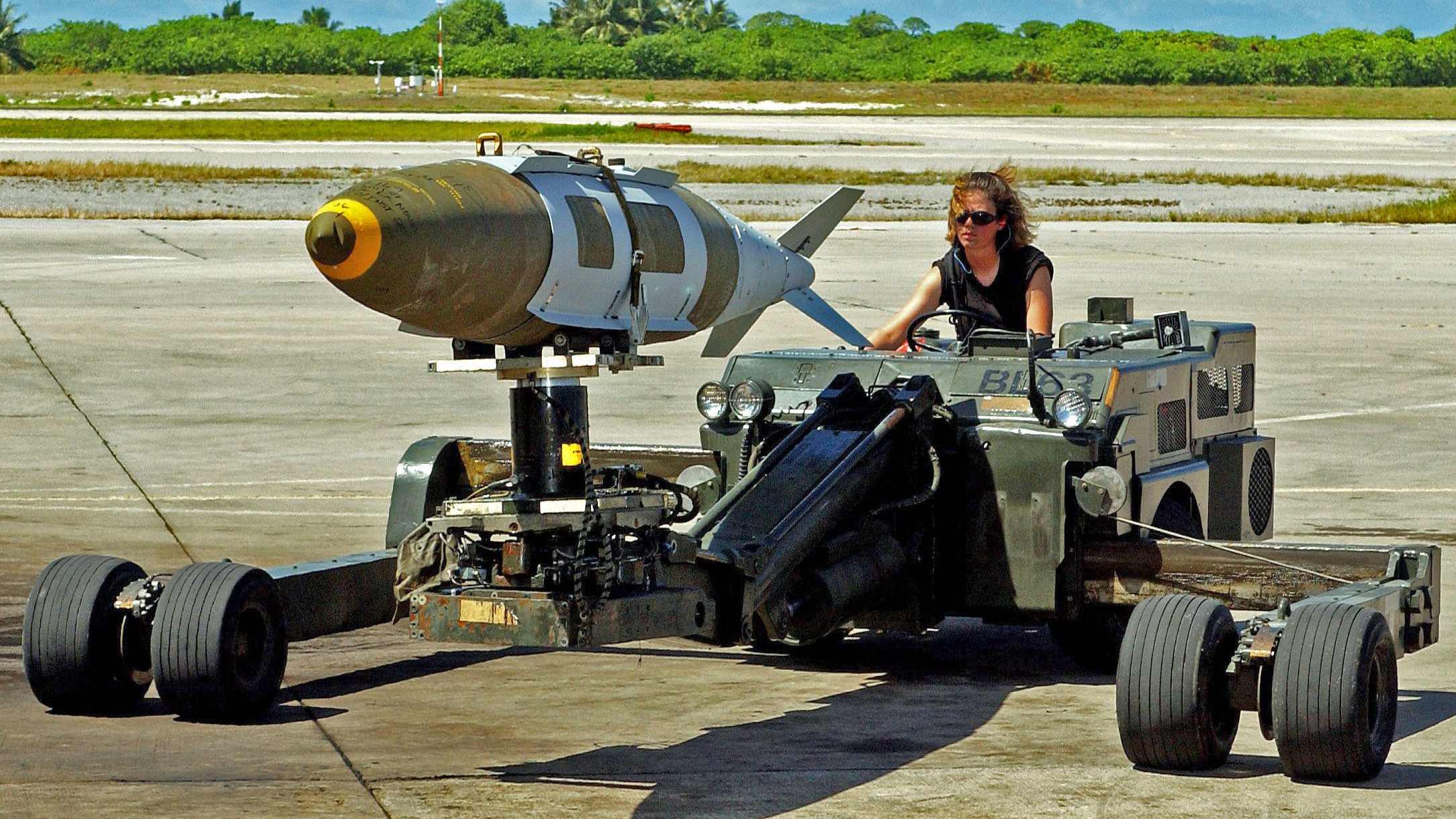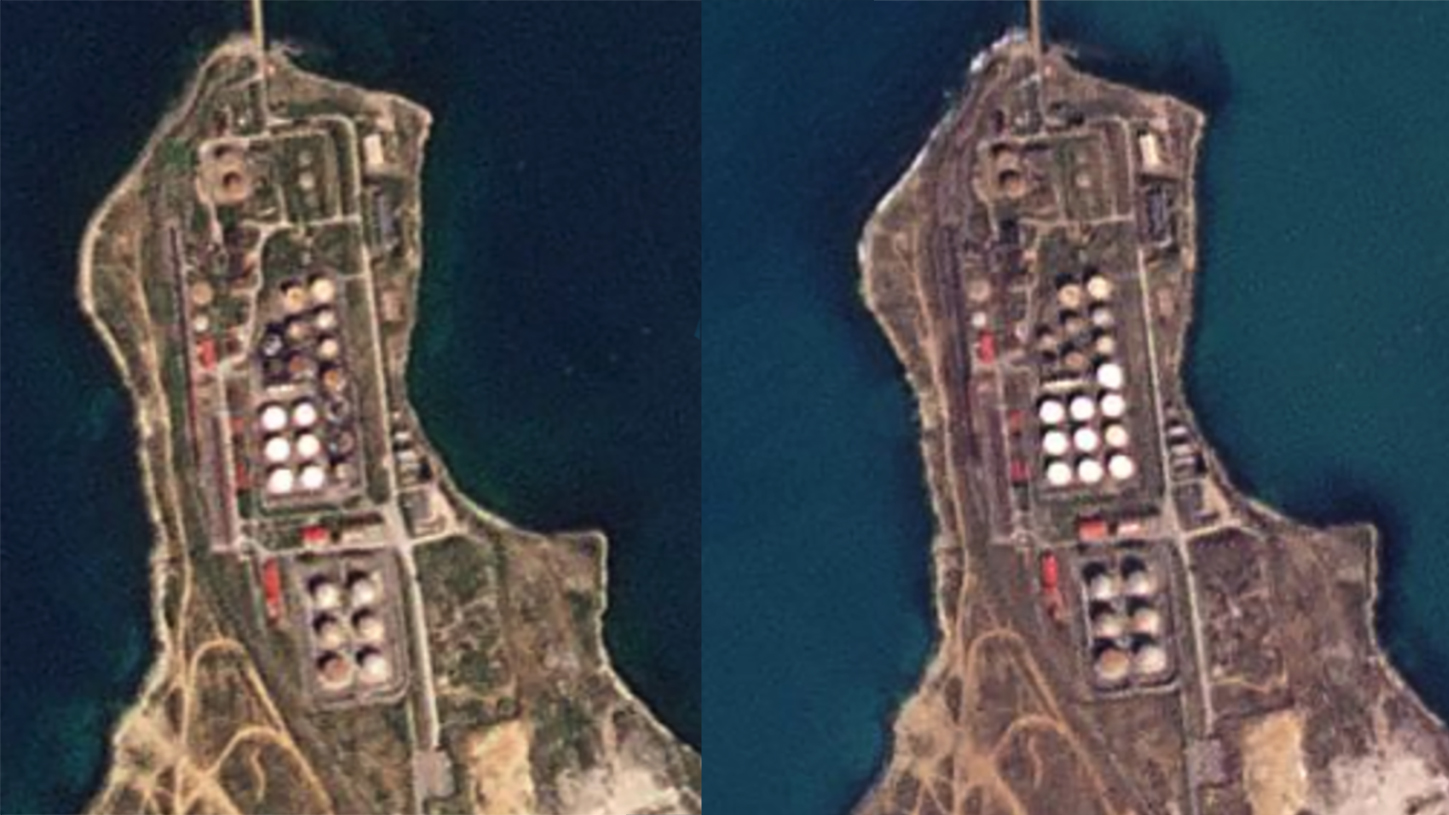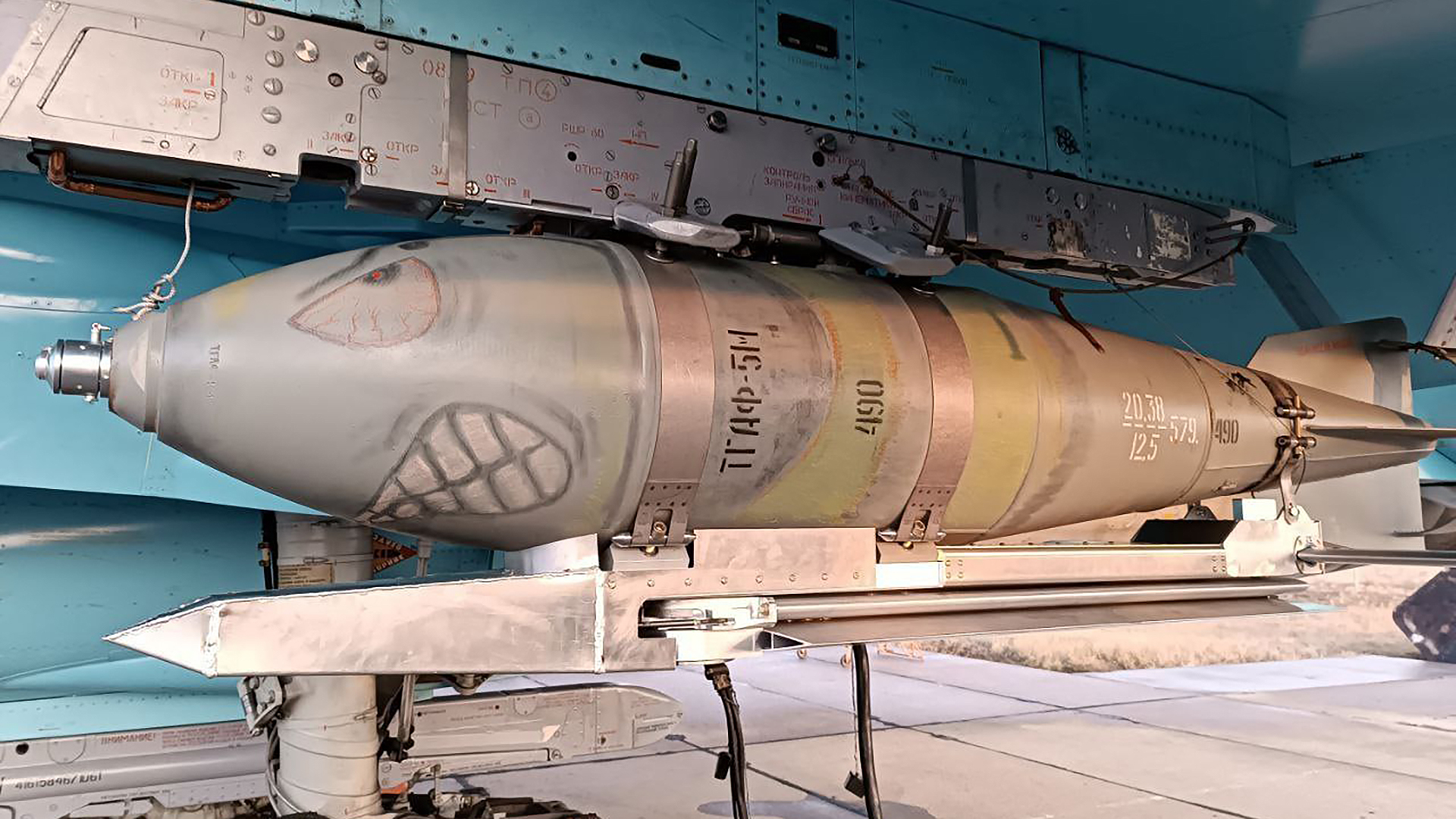In addition to missile strikes like those occurring over the past several days, Russia’s use of extended-range air-to-surface bombs is becoming an increasing challenge, the Ukrainian Air Force spokesman claimed on Tuesday.
Guided glide bombs are usually less costly and simpler to produce than powered missiles. In the context of Ukraine, they would allow Russian tactical jets to release the weapons outside of the heart of the adversary’s air defense umbrella, allowing for cross-border strikes without the extreme risk of losing the launching aircraft.
“Every day, about 20 guided air bombs fly into the front-line areas. They are made by the Russian method, recently and not always of high quality,” Col. Yuri Ignat said during a press briefing. “Those bombs can fly about 70 kilometers (about 43 miles) and they may target the facilities of critical infrastructure, kindergartens, residential areas and educational and medical institutions and we cannot counter this type of ammunition. Our air defense is inefficient against the bombs themselves but we should rather try to down the Su-34 [Fullback strike fighter] carriers of this ammunition.”

To do that, Ignat said Ukraine needs more capable air defense systems than the array of Soviet-era systems like the S-300s it currently possesses.
The good news, said Ignat, is that “now we have some Western equipment which allows us to target the enemy aircraft at a distance of 150 kilometers (about 93 miles),” a reference to the two Patriot air defense systems – one donated by the U.S., the other donated by a combined effort between Germany and Netherlands – that arrived in Ukraine last month.

Under the right circumstances, including the use of a “collaboration of sensors across multiple domains,” the Patriot system can hit fixed-wing aircraft from that distance, David Shank, a retired Army colonel and former commandant of the Army Air Defense Artillery School at Ft. Sill, Oklahoma, told The War Zone Tuesday.
Shank also concurred that the Patriot’s radar makes it a much better system to counter such aircraft than that of the S-300 systems.
With more Patriots, Ukraine could keep Russian aircraft away from the borders or shoot them down, but “unfortunately, we only have two battalions of such air defense systems and now we’re waiting for the decision about” the U.S.-made F-16 Viper jets. U.S. officials have repeatedly stated they are not on the table for Ukraine while other nations possessing the jets continue to debate the issue.
Russia’s guided bombs have been such a problem that the deputy mayor of Orihiv in Zaporizhzhia Oblast claimed there are no more children there as a result of the ongoing bombardment in large measure by those weapons.

“All the children were taken away from the city of Orihiv,” Svitlana Mandrych told the U.S.-funded Radio Svaboda news outlet. “We currently have no children in town. There are still six children left in the village of Novopavlivka, these are two families. We are currently working with them on the need for evacuation.”
The biggest threat at the moment is guided air bombs which the Russian army uses every day on the front-line unoccupied territory of the Zaporizhzhia Oblast, she said.
“These are very large 500-kilogram (about 1,100 pounds), 1,500 kilogram (about 3,300 pounds) bombs, which have a very large destructive force,” Mandrych said. “Today, almost 80% of houses and the private sector have been destroyed or damaged in the city.”
Neither Ignat nor Mandrych specified the type of guided bombs being used by Russia, but we have written about several different types of Russian aerial munitions with apparently similar attributes.
The first visual evidence of Russia’s use of Grom missiles emerged in March, which you can see in this tweet from that time below.
The Grom is an air-to-surface weapon with a pair of pop-out wings that give it an extended stand-off capability, and it comes in powered and unpowered forms.
It has a reported range of about 60 to 74 miles, depending on the source. There are two versions. The Grom-E1, as we noted at the time, is armed with a high-explosive fragmentation warhead that weighs just under 700 pounds and is paired with an impact fuze. The Grom-E2, with the Russian designation 9-A2-7759, is said to be based on the KAB-500OD bomb body.
You can read more about the Grom family of air-to-surface weapons in our deep dive here.
In January, we told you about images that emerged of what appeared to be a FAB-500M-62 with a kit attached that features pop-out wings loaded onto a Russian Fullback combat jet. While we had no clear indication at the time that the modified weapon is guided, but that could be the case, we mentioned that the wing kit could still allow the bomb to be employed against target areas at extended ranges, allowing pilots to stay further away from enemy air defenses.
You can see the image in this tweet from the Oryx OSINT group below.
In our previous analysis of the picture that emerged online, we noted that the wing kit appeared to consist of two pop-out main wings and a pair of horizontal stabilizers fitted to an elongated metal assembly that is strapped to a FAB-500M-62 – a 1,100-pound (500 kilogram) class general-purpose high-explosive bomb. There has been some potential evidence that these crude kits are being used operationally.
As we additionally pointed out in January and later in March, these bombs have drawn comparisons to the U.S. Joint Direct Attack Munition (JDAM) family of precision-guided bombs, examples of which Ukraine’s military confirmed was operational in March and for which range-extending wing kits are also available. Standard JDAMs use a combination of inertial navigation system (INS) and GPS guidance, together with an autopilot, to direct the bomb’s course via a set of steerable tail fins. Depending on the release altitude, a 500-pound-class JDAM-Extended Range (JDAM-ER) with a wing kit can hit targets up to 40 miles away.

So while neither Ignat nor Mandrych specified the type of guided bomb Russia is using, if their statements are indeed accurate, it would appear that Moscow has achieved some level of standoff glide bomb capability at scale.
Before we head into the latest updates from Ukraine, The War Zone readers can catch up on our previous rolling coverage here.
The Latest
The U.S. will for the first time send Ukraine air-launched unguided Hydra 70mm (2.75-inch) rockets, according to a Reuters report today.
The rockets are part of a new $300 million tranche of military aid the U.S. plans to announce as soon as Wednesday, according to Reuters, citing “two U.S. officials.” Hydra rockets are typically launched from a pod attached to an aircraft, but can also be launched on the ground from specially equipped vehicles. They are the base platform for laser guided-APKWS kits which have long been promised to Ukraine and can operate in an anti-ground target role and in an anti-drone role.

It is odd that APKWS has long been listed as part of the military aid donations to Ukraine, but this is the first Hydra transfer. It could be APKWS is finally ready to be fielded and some of these rockets will equip them, while others could be used in their basic application — air-launched against ground targets. Otherwise, APKWS has been delivered with Hydras as single rounds, or considered as such. We just don’t know at this time.
Recent imagery points to 5-inch Zuni rockets already being in use with Ukraine’s Su-25s. You can read more about that here.
The new package will also include 155mm howitzers and associated ammunition, as well as additional Guided Multiple Launch Rocket System (GMLRS) munitions for M142 High Mobility Artillery Rocket Systems, or HIMARS and more Tube-Launched, Optically-Tracked, Wire-Guided (TOW) anti-tank missile as well as more mortars.
Demolition equipment and trucks are another part of the package, the officials said, cautioning that the package was still being finalized and could change.
Satellite images from Planet Labs obtained by The War Zone show that multiple fuel tanks were destroyed during a Ukrainian kamikaze drone strike on Sevastopol on April 28.
The image below on the right shows how the fuel depot complex at Kozacha Bay looked before the attack. The image on the left shows what it looked like after the attack. At least four tanks on the right row appear to be destroyed while additional tanks look like they were damaged, as well.

The strike is the latest in a series of Ukrainian operations against Sevastopol using unmanned air and sea vehicles dating to last summer’s attack on the Black Sea Fleet Headquarters. Ukrainian kamikaze boats attacked the fleet itself in October, with numerous other attempted and successful attacks before and after.
Here’s what the latest strike looked like while it was burning over the weekend.
When it came to finding out about the massive trove of leaked classified documents that included potentially damaging information about his country, Ukrainian President Volodymyr Zelensky told The Washington Post he found out about them like nearly everyone else.
Through media accounts.
In an interview with the newspaper, Zelensky said he has not had any conversations with the White House about the leak, calling the disclosures damaging to both Washington and Kyiv.
“I did not receive information from the White House or the Pentagon beforehand,” Zelensky said. “We did not have that information. I personally did not. It’s definitely a bad story.”
“It is unprofitable for us,” Zelensky added. “It is not beneficial to the reputation of the White House, and I believe it is not beneficial to the reputation of the United States.”
Yesterday, we told you that the White House said 20,000 Russian troops have been killed fighting in Ukraine just since December.
The Kremlin on Monday rejected that figure and Moscow’s defense chief announced his own Ukrainian casualty count.
“Washington simply does not have the possibility to name any correct figures,” Kremlin press secretary Dmitry Peskov said, according to UPI.
Meanwhile, Russian Defense Minister Sergei Shoigu said Ukraine has suffered “great losses” in the past month.
“Despite the military support coming from the West, the enemy is suffering great losses,” Shoigu said without proof during his opening address of a “special teleconference” with the leadership of the Russian Armed Forces. “Over the past month, the Armed Forces of Ukraine has lost over 15,000 troops.”

The Russian Armed Forces “continue to destroy the weaponry supplied by the West to the Armed Forces of Ukraine,” he added.
Shoigu also talked about the importance of Russia’s defense industry.
Russian troops “depend to a great extent on timely replenishment of military hardware and armament,” he said. “Russia’s leadership has set the task for the defense industry enterprises to boost the production pace and volume. The necessary measures have already been taken.”
Compared to the start of 2022, Shoigu said “the quantity of significant weapons acquired has increased 2.7-fold, and the quantity of particularly highly demanded weapons has increased 7-fold.”
Despite complaints from Yevgeny Prigozhin to the contrary, the head of the Wagner mercenary group, Russian troops “have already received enough ammo this year to deal with the enemy successfully,” Shoigu claimed.
Speaking of weapons and ammunition, when Ukrainian troops retreated from the salt-mining town of Soledar, they apparently left behind a large cache of arms, according to the Russian BRUSSINF Telegram channel.
For the second day in a row, saboteurs in Russia’s Bryansk Oblast have destroyed rail tracks leading to a train derailment, according to the regional governor.
“An unidentified explosive device went off near the Snezhetskaya railway station,” Alexander Bogomaz wrote on his Telegram channel Tuesday. “There were no casualties. As a result of the incident, a locomotive and several wagons of a freight train derailed. All emergency services are on site.”
Bogomaz said that “employees of the Ministry of Emergency Situations and emergency services are taking all necessary measures to eliminate the consequences of the incident. Law enforcement agencies are conducting operational-search activities.”
Ukraine said nope to the Pope’s peace mission involving the Vatican to resolve the conflict with Russia, according to CNN.
“President Zelensky has not consented to any such discussions on Ukraine’s behalf,” a Ukrainian official close to the presidential office told CNN.
“If talks are happening, they are happening without our knowledge or our blessing.”
That Ukrainian official “dismissed any papal role after Pope Francis on Sunday told journalists that the Vatican is part of a mission to end the war in Ukraine,” according to CNN. “The mission is in the course now, but it is not yet public,” he said after a three-day trip to Hungary.
“When it is public, I will reveal it,” the pope added.
A Russian T-80BV tank blew up when its ammunition cooked off after being struck by Ukraine’s 72nd Mechanized Brigade near Mykilske in Donetsk Oblast.
And in Novoselivka Druha in Donetsk, the Ukrainian 110th Mechanized Brigade destroyed a Russian BMP-1 infantry fighting vehicle.
And finally, Russian authorities apparently have video of the men running around Moscow posting signs bearing photos of Maj. Gen. Kyrylo Budanov, the head of Ukraine’s Defense Intelligence Directorate (GUR), who has so angered Russians that they had him arrested in absentia. As an added thorn in the side of Vladimir Putin, the signs said “Our President.”
That’s it for now. We’ll update this story when there’s more news to report about Ukraine.
Contact the author: howard@thewarzone.com
